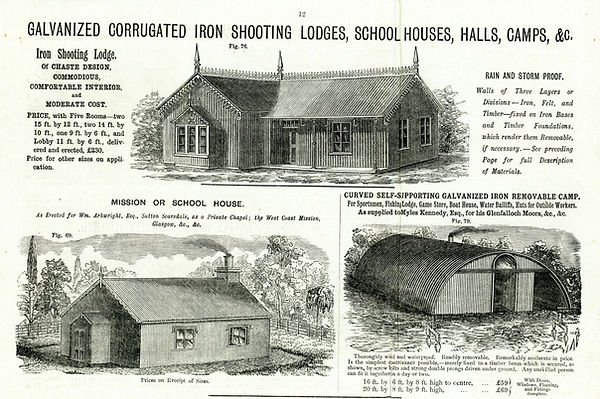Prefabrication
Research on early prefabricated structures has tended to focus on buildings sent abroad during the mid-Victorian period, often to Australia. Indeed, Australia’s hundred or so early prefabricated iron buildings, many imported from Britain, are now the focus of an Australian bid for UNESCO World Heritage status. Much less interest has been shown in the substantial British home industry (prior to post-Second World War prefabs), despite the fact that a number of successful firms offered everything from iron and timber-clad houses to churches, villas, cricket pavilions, village halls and the like. Prefabrication companies sent massive catalogues, often reaching several hundred pages, to potential customers who chose their building and had it shipped, ready to erect.

Changes in printing technology towards the end of the nineteenth century allowed prefabrication companies to issue huge catalogues showing hundreds of buildings in great detail. Potential purchasers could choose the size, layout and finish of everything from a dog kennel to a country villa to a city church. Catalogues occasionally included lists of previous customers, and sometimes testimonials from satisfied clients, which can now be connected to actual buildings. The digitisation of newspapers means that, for instance, openings of new churches can be traced so that locations and numbers of tin tabernacles originally built may be assessed. More archival resources relating to prefabrication companies are slowly becoming available.

For more on prefabrication, including progress towards a future publication on early prefabricated buildings, including the amazing tin tabernacles, please see the